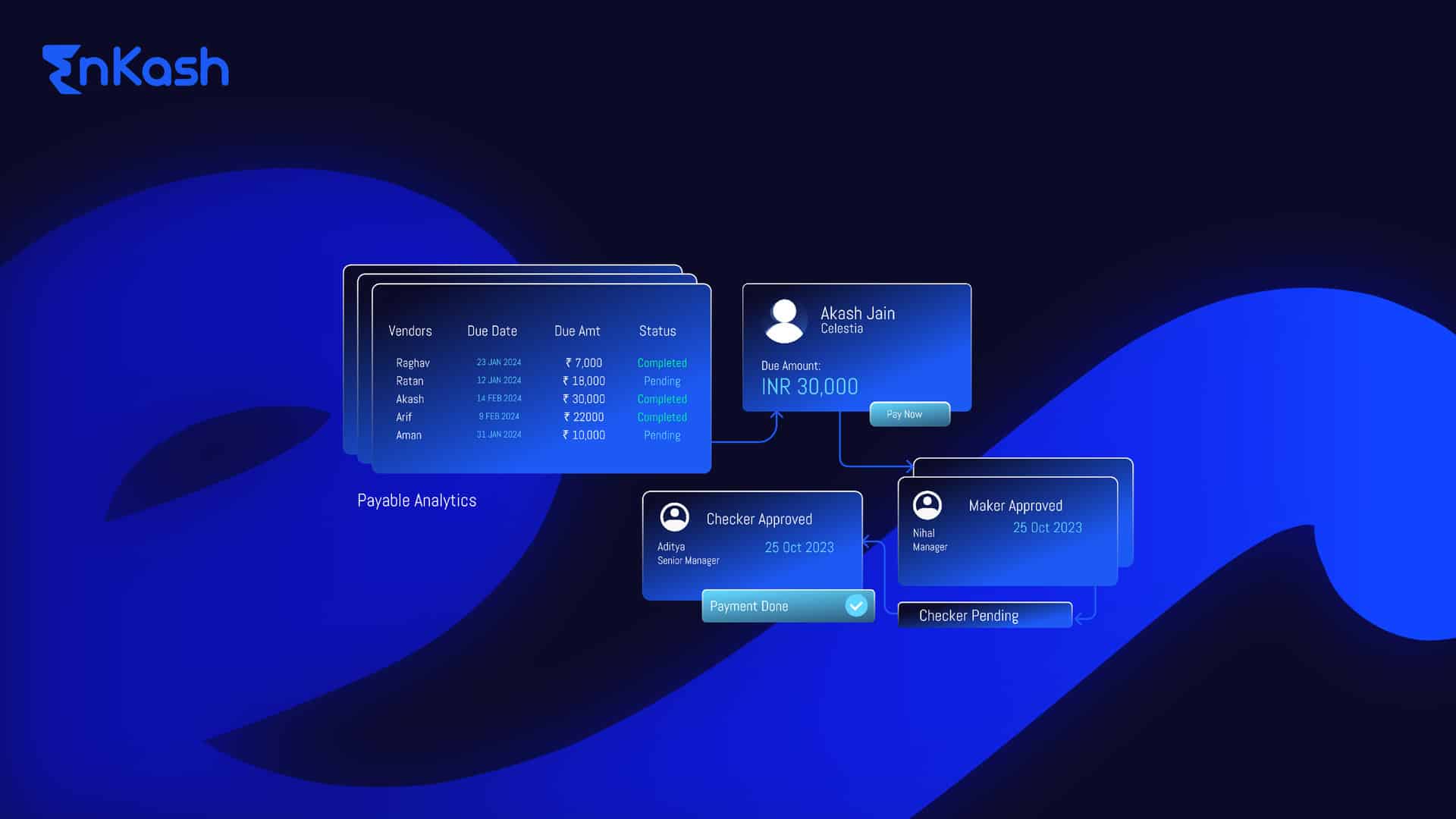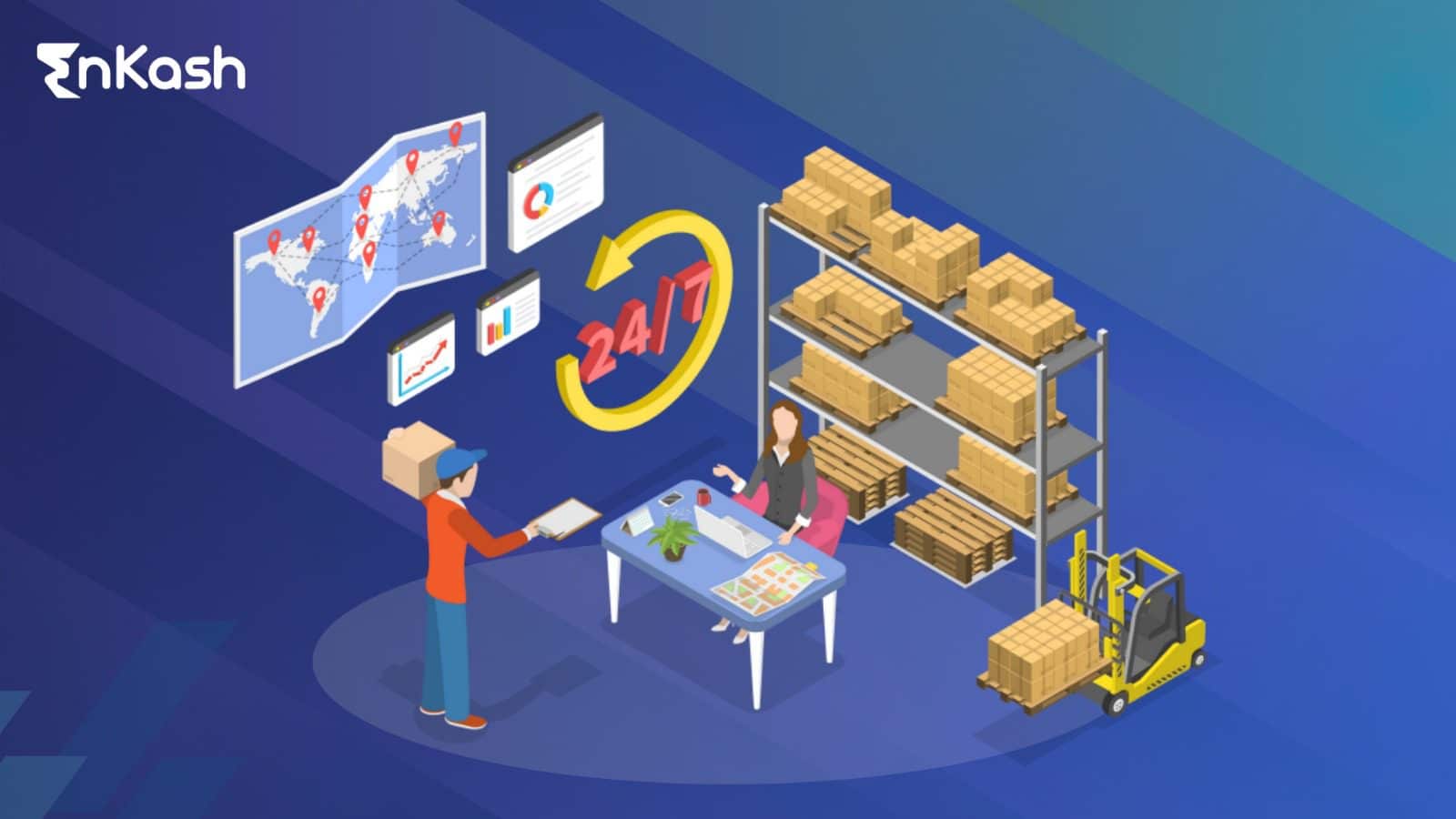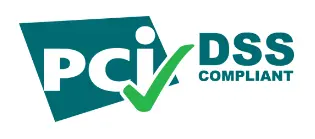The payroll management process is one of the most complex things for an individual, especially for new business owners and HR personnel. The process can be overwhelming, from calculating salaries and allowances to complying with various tax regulations. But fear not!
This comprehensive guide will break down the payroll process in India into easy-to-understand steps, methods, and stages, and give you all the information you need for smooth and compliant payroll processing.
What is Payroll Processing?
Before diving into the nitty-gritty, let’s establish a clear understanding of what is payroll processing. It’s the entire cycle involved in calculating, withholding, and disbursing employee compensation. This includes various components like:
Calculating gross salary: This includes base salary, allowances, bonuses, and other earnings
Deducting taxes and other contributions: This involves Tax Deducted at Source (TDS), Provident Fund (PF), and Professional tax
Net salary calculation: This is the final amount paid to the employee after deducting all taxes and contributions
Payslip generation: This document details the breakdown of the employee’s salary, including earnings, deductions, and net pay
Statutory compliance: Adhering to labor laws and government regulations regarding payroll processing
What is Payroll in HR?
Payroll in HR refers to the system that deals with employees and ensures that payments are accurate and on time.
It involves several crucial roles:
- Salary Calculation: HR calculates gross pay, including hours worked, overtime, payment for specific tasks, and additional allowances.
- Tax Deductions: HR is tasked with making sure there are appropriate taxes withheld to include income and any other statutory requirements concerning the current laws and standards.
- Compliance: At all times, the HR department works to ensure that the existing standards concerning labor provisions are followed, such as making timely remittances of obligations such as PF, ESI, and other benefit funds for employees’ wellbeing.
- Record Maintenance: The HR Department is also involved in keeping up paperwork on wages, tax liabilities, and any other necessary information for audit and other regulatory requirements.
By handling these processes, HR plays a critical role in both employee satisfaction and organizational efficiency, ensuring a smooth payroll operation.
Components of Payroll
Every aspect of payroll is significant in ensuring that employees are compensated correctly and justly for their services. Fundaments here comprise the following:
Gross Wages or Salary
The total remuneration earnings of an employee, include the basic salary, overtime pay, and other earnings such as bonuses, before the resultant wage comes down. Determining gross wages is paramount, as this is the figure from which deductions will be computed.
Deductions
Several deductions are made on both the wage bill and the gross earnings of the worker, such as federal income tax, state income tax, Medicare, healthcare deductions, Social Security, and pension funds, among others.
Some of the additional deductions may include; payment for union dues, donation to charity, and salary garnishment in case there are any.
Net Pay
It refers to the final salary that a worker earns after all the deductions have been made. It is also referred to as take-home pay. There is a great need to ensure that the net pay figures are correct so as not to jeopardize employees’ trust and financial order.
Benefits
Benefits often include health care pension plans and some others such as stock options and even health club memberships. These additional benefits are not cash but they are part of a total package and are appreciated by employees.
Reimbursements
This is usually provided on top of the annual wage that covers expenses engaged by employees in a course of work, e.g. traveling, meals, or items purchased. Reimbursements in most cases do not attract taxation and they are usually treated accordingly to avoid mix up.
Leave and Absence Management
Managing the periods of paid time off or negatively affecting the payroll calculations by tracking sick leaves as well as unpaid absences. Proper management of leave especially in payroll setting aids in promoting correct salaries and helps in the adherence to the labor laws.
Methods of Processing Payroll
Different methods suit different organizational needs, and each has its advantages and drawbacks:
Manual Payroll:
Calculations are carried out manually which is suitable for companies having smaller workforce. While it saves on software costs, it is labor-intensive, time-consuming, and has a higher risk of errors.
Spreadsheet-based Payroll:
Payroll computations are handled in systems whereby data is entered in structured units like Microsoft Excel. This is better than doing the processing manually; nonetheless, it is still prone to errors because of extensive data entry.
Outsourcing:
Third parties are engaged to do all the payroll activities on the businesses’ behalf, including tax remittance to paying salaries to staff. Outsourcing ensures compliance and reduces in-house burden but may come with added costs and less control.
Payroll Software:
Software undertakes all payslip calculations, tax payments, returns filing, and reporting, increasing the scope and reducing errors. It is economical for medium-scale and large-scale firms as well as those with complicated payroll issues.
ERP Integration:
In the case of huge firms, payroll systems can be assimilated into ERP processes which is a system that incorporates HR, financial resources, and payroll for immediate processing of information.
This allows for easy sharing of data but the installation may be difficult and expensive.
Why is Payroll Processing Required?
Payroll has the following functionality:
Developing a Comprehensive Payroll Policy
This policy must outline the guidelines for employee compensation, inclusive of pay schedules, overtime rules, bonuses, and paid time off.
State different components like basic salary, variable pay (commission, bonuses, etc.), House Rent Allowance (HRA), Leave Travel Allowance (LTA), and any other applicable allowances clearly in the payslip.
Establishing a Streamlined Payroll Process
Data Gathering: Collect essential employee information like salary structure, bank account details, tax withholdings, and benefit deductions.
Timekeeping: Have a system in place to track employee hours worked, including regular hours, overtime, and paid leave.
Calculation: Utilize efficient payroll software to accurately calculate gross pay, statutory deductions (income tax, social security, etc.), and non-statutory deductions (medical insurance, retirement contributions, etc.). This is a key part of what is payroll management, ensuring that employees are compensated according to company policies and legal requirements
Distribute Salaries and Payslips
- Salary Disbursement: Pay net salaries to employees through their preferred method, such as direct deposit or paper checks.
- Payslips: Hand over payslips to employees detailing their earnings, deductions, and net pay. These can be physical copies or digital versions delivered electronically.
Timely Tax and Deduction Deposits
Tax Withholding: Deposit tax withholdings with the concerned tax authorities within the mandated timeframe.
Other Deductions: Submit employee contributions towards social security, pension plans, or other benefits to the designated institutions according to their schedules.
Maintaining Accurate Payroll Records
Maintain payroll records securely including timesheets, payslips, and tax filings to ensure compliance with regulations and for future reference.
Regularly reconcile payroll accounts to verify their accuracy and identify any discrepancies.
Payroll Activities – Pre and Post
The activities associated with payroll are generally classified into two parts pre and post-payroll activities to uphold accuracy and compliance:
Pre-Payroll Activities
Pre-payroll activities set the foundation for accurate and compliant payroll processing. These tasks ensure all necessary data and policies are in place before calculations begin.
- Collection Of Employee Data: Involves gathering as well as confirming such information as salary information, hours worked, tax details, and banking information.
- Policy Compliance: Ensuring that payroll policies such as overtime rates, bonuses, and deductions align with company guidelines and current labor laws
- Input Control: Checking pre-payroll data such as employee maintenance, attendance, overtime, and other inputs against the pre-established formats to limit payroll errors.
Post-Payroll Activities
Post-payroll activities focus on payment execution, compliance, and record-keeping. These steps ensure employees are paid accurately and on time while maintaining legal and financial accountability.
- Payroll Payment: Making payments to staff through various methods including but not limited to wires, checks, or direct deposits.
- Payroll Management: Recording payroll transactions in the company’s accounting system to maintain financial accuracy.
- Compliance And Reporting: Reporting and remitting taxes, preparing required returns, and otherwise acting to comply with the law and avoid sanctions.
- Payroll Compliance: Carrying out primary document check analysis about the issuance of salary to staff.
Stages of Manual Payroll Processing
The payroll process may seem like an easy task but it is a collective effort of multiple departments including HR, finance, and legal. The process includes the following functions:
- Standardized payroll structure
- Centralizing payroll inputs
- Validating inputs
- Calculating payroll
- Deduct taxes and other statutory compliances
- Payroll accounting
- Making the salary payment
- Make statutory payments
- Payslips and tax computation sheets
Stages of Automated Payroll Processing
Automating payroll transforms a traditionally complex process into a streamlined and error-free system. Each stage ensures efficiency, compliance, and transparency, from policy setup to final reconciliation.
- Policy & Compliance: Establish clear pay practices and deductions, and ensure adherence to tax and labor laws.
- Centralized Data: Gather and manage employee details, timekeeping data, and deductions in a single system.
- Automated Inputs: Integrate timekeeping systems or allow for employee self-service to reduce manual entry.
- Input Validation: Implement automatic checks to ensure data accuracy before processing payroll.
- Automated Calculations: Utilize payroll software to calculate gross pay, taxes (income tax, etc.), and net pay.
- Deduction Management: Automatically withhold and track deductions for taxes, benefits, and other obligations.
- Secure Payment Processing: Distribute net pay securely via direct deposit or paper checks.
- Automated Tax & Reporting: Withhold and deposit taxes to relevant authorities on schedule.
- Electronic Payslips: Generate and deliver payslips to employees electronically for easy access and record-keeping.
- Automated Reconciliation: Reconcile payroll accounts regularly to ensure accuracy and identify any discrepancies.
Why is Payroll Processing Important for Businesses?
Accurate and timely payroll processing is crucial for businesses of all sizes for several reasons:
- Employee Satisfaction: Getting paid accurately and on time is vital for employee morale and motivation. Delays or errors can create frustration and negatively impact employee engagement.
- Compliance with Regulations: Businesses in India must comply with various tax and labor laws regarding employee compensation. Failing to do so can result in hefty penalties and legal repercussions.
- Financial Accuracy: Maintaining accurate payroll records is essential for financial reporting and budgeting purposes. It ensures transparency and helps businesses make informed financial decisions.
Advantages of Payroll Processing
Efficient payroll processing is an important factor in the performance of an enterprise, which ensures the timely and correct payment of wages to employees. Their advantages include:
Adherence to Tax Obligations
Payroll processing systems help organizations adhere to federal, state, and local laws regarding tax payments, mitigating the risk of incurring penalties and lawsuits. Most of the payroll systems incorporate tax regulations and rates automatically diminishing the chances of manual work and the chances of error.
Greater Employee Satisfaction
Employees appreciate the timely and correct payment of wages, which enhances their sense of being valued and minimizes job turnover. Fixed pay procedures are beneficial with regard to morale, creating a positive working environment, as they demonstrate concern for the employees of the organization.
Better Control on Finances
An organization’s payroll processing enables it to control and forecast labor costs appropriately, which, in turn, improves budgeting and financial projection accuracy. Facilitates HR and finance functions in controlling budgets by tracking expenditures effectively leading to improved resource allocation and cost control.
Maintaining Accurate Payroll Records
Audit trails, regulatory compliance, and business strategies all benefit from the clear records that payroll systems can readily provide. For instance, proper payroll documents facilitate the year-end, tax, or management reports preparation, and financial interpretation as well.
Safety of Data
Most payroll processing software implements security mechanisms to ensure that information, such as employee and financial records, is protected from unauthorized access or system hacking. Most of the systems provide security in the form of data encryption and granting access on a need-to-know basis with regard to payroll information.
Improved Productivity
One major advantage that comes with the adoption of an automated payroll system is the minimization of time spent in making manual computations thus allowing the HR and finance departments to engage in productive activities. Eliminates repetitive tasks, streamlining the payroll workflow and reducing human error.
Understanding the payroll process steps in India
Now, let’s go through a detailed guide on the payroll process in India:
1. Define Your Payroll Policy
The foundation of your payroll system lies in establishing a clear and well-defined payroll policy. This document outlines essential aspects like:
- Pay cycle: How often employees will be paid (e.g., monthly, bi-weekly)
- Salary components: Breakdown of different elements included in the gross salary (e.g., basic salary, allowances, bonuses)
- Leave and attendance policy: Guidelines for leave entitlements and recording attendance
- Tax regulations: Procedures for calculating and withholding taxes like Tax Deducted at Source (TDS)
2. Gather Employee Information
Accurate and up-to-date employee information is vital for effective payroll processing. This includes details like:
- Name, address, and contact information
- Bank account details for salary disbursement
- PAN (Permanent Account Number) for tax purposes
- Investment declarations (if applicable)
3. Track Attendance and Leave
Maintaining meticulous records of employee attendance and leave is crucial for accurately calculating their net pay. This can be done through various methods, such as:
- Biometric attendance systems
- Time and attendance software
- Manual attendance registers
4. Calculate Gross Salary and Deductions
Once you have all the necessary information, you can proceed with calculating the gross salary based on the agreed-upon pay structure. Subsequently, various deductions need to be applied, including:
- TDS: Tax deducted at source, calculated based on the employee’s income tax slab
- Provident Fund (PF): A mandatory contribution towards employee retirement savings, shared between employer and employee
- Professional Tax: A state-specific levy on employee income
Other deductions: Any additional deductions authorized by the employee, such as health insurance premiums or loan repayments
5. Calculate Net Salary
After factoring in all deductions from the gross salary, you arrive at the net salary, which is the final amount paid to the employee.
6. Disburse Salaries and Generate Payslips
The calculated net salary is then disbursed to the employees through their designated bank accounts. Additionally, generating payslips for each employee is crucial. These documents provide a breakdown of their earnings, deductions, and net pay, ensuring transparency and record-keeping.
7. File Statutory Reports and Deposit Deductions
Finally, businesses are obligated to file statutory reports and deposit deducted taxes and contributions to the authorities within stipulated deadlines. This ensures compliance with various regulations like the Income Tax Act, PF Act, and Professional Tax Act.
Common Methods of Payroll Process in India
There are three primary methods of payroll process in India:
Manual Payroll
This traditional method involves manual calculations and record-keeping using spreadsheets or registers. While suitable for very small businesses, it can be time-consuming, prone to errors, and challenging to scale.
In-House Payroll Software
Businesses can invest in dedicated payroll software to automate various tasks like calculations, deductions, and payslip generation. While offering more efficiency than manual methods, this option often requires upfront investment and technical expertise for implementation and maintenance.
Outsourced Payroll Services
Many companies choose to outsource their payroll processing to specialized service providers. This eliminates the burden of managing payroll in-house, ensures expertise and compliance, and provides access to advanced features, though it comes with associated service fees.
Challenges in Handling Payroll Process
As businesses grow, payroll processing can become increasingly complex. Below are some of the main challenges organizations face:
Compliance with Laws
No matter the jurisdiction, payroll processing must consult federal, state, and local tax laws, which are in a state of constant fluctuation due to new policies introduced. Failing to comply with these laws can lead to penalties and fines. Staying updated on the latest tax codes and labor regulations is essential to avoid non-compliance issues.
Data Accuracy
Data accuracy is the backbone of the payroll process, including staff data, hours worked, amounts to be deducted, and bonuses. Even the slightest mistake is of great significance; it may lead to a situation where an employee is underpaid, overpaid or taxes are incorrectly filed triggering a process of rectification which is tiresome. An accurate testament of payroll data is achieved by controlling the inputs and data entry processes.
Security and Privacy
In addition, payroll information has personal attributes, for instance, Social Security Numbers, bank accounts, remuneration, etc., which must be protected. Allowing this kind of data to be accessed by unwanted persons may lead to identity fraud, litigation, and damage to the company’s profile. Techniques for safeguarding these kinds of information include data encryption, use of passwords, and at least once a month examination of the systems.
Cost Management
Paying employees also has its own administrative burdens, for example, payroll systems, costs for training new personnel, and, if necessary, costs for hiring third parties. These costs may be hard to control for small enterprises but large businesses still require effective approaches to manage payroll costs incurred. Cost-effective payroll solutions that suit the size and needs of the business help to bring down costs without sacrificing the quality of service or compliance.
Dealing with Employee Concerns
Most employees would like to know about their payslips and other issues such as deductions, benefits, or even errors linked with their pay calculations. It is essential to respond to these questions as quickly as possible to help in retaining the level of trust and satisfaction of employees heaped on the organization. This is why payroll teams should be able to take over such issues professionally and openly to prevent any conflicts from arising between the employees.
Time Management
Payroll processing is also done within a specified timeframe, failure to which delay in payment may lead to employee dissatisfaction or in some situations, failure to meet tax filing deadlines. Organizations must also observe some reasonable deadlines to ensure that all the payroll activities are accomplished and that the salaries are paid accordingly. This challenge is even more pronounced when the companies are bigger making time management a very critical factor for payroll performance and employee confidence.
Payroll Processing with Examples
To illustrate the payroll process in India with a practical example, let’s consider the following scenario:
An employee earns a monthly gross salary of ₹50,000
Their deductions include:
TDS: ₹10,000 (based on applicable tax slab)
PF: ₹2,500 (employer contribution: ₹1,250, employee contribution: ₹1,250)
Professional Tax: ₹200
Therefore, the net salary payable to the employee would be: ₹50,000 – ₹10,000 – ₹2,500 – ₹200 = ₹37,300
Remember, this is a simplified example, and actual calculations may vary depending on individual circumstances and specific deductions applicable.
How to Manually Calculate Payroll
It is important to note that calculating payroll manually would be better adapted to smaller businesses or startups with minimal/fewer employees. Below are the steps involved in manually and accurately calculating payroll.
Calculate Gross Pay
To begin with, measure the gross pay for every employee. This is computed as the hourly rate multiplied by the number of hours worked within the pay period for hourly employees. In the case of employees who receive a salary, gross pay is simply the fixed sum paid to them every month. It is thereby necessary and important to record all hours worked and any wages earned for proper computations.
Add Overtime
If the employee worked additional hours outside their shift and is thus entitled to overtime, determine the overtime pay by applying the employee’s overtime rate usually 1.5 of the normal hourly rate on the overtime worked. This overtime pay is an addition to the employee’s gross pay. Carefully managing the recording and payment of overtime not only protects the organization from breaches of the law but also is a factor in the morale of the employees.
Apply Deductions
After getting the calculation on the gross pay figure, such amounts of money that are mandatory will be deducted and net pay attained. The usual withholdings are taxes (federal and state income, social security, medicare), health premiums, retirement, and other optional withholdings. Some deductions are compulsory by the law and some are benefits offered by the employer. It is important to note that deductions should be made correctly otherwise payroll and tax calculations will be inaccurate.
Calculate Net Pay
In most cases, the last word or simple deduction is made in order to obtain Net pay, otherwise referred to as take-home pay, which is usually the gross pay minus the total deductions. This is usually the last figure that will come in the paycheck to be given to the employee. It is imperative that great care is taken with this calculation as it goes a long way in promoting goodwill between the employer and his employees.
Review and Confirm
Thoroughly verify all details especially the number of hours worked, total earnings, withholding, and any extra payment such as overtime. Verification of computations is used to correct possible mistakes before paying out funds, thereby minimizing amendments later.
Record Payroll
Keep comprehensive records for every payroll computation made in terms of gross earnings, allowances, net payments, and any additional earnings. Proper records are necessary to comply with the law in respect of auditing and retaining records. Also, the safekeeping of these records contributes to the integrity and responsibility of the payroll administration.
How Can EnKash Help Streamline Your Payroll Processing?
EnKash understands the complexities of the payroll management process and strives to simplify it for businesses of all sizes. We offer comprehensive payroll processing services that address the challenges mentioned above and empower you to manage your payroll efficiently and compliantly.
Here’s how EnKash can help:
Employee Data Verification: Streamline the onboarding process by efficiently collecting and validating crucial employee information through our e-KYC feature. By verifying details before initiating payroll, EnKash ensures accuracy and compliance with regulatory requirements, minimizing errors in the payroll system.
Salary Account Validation: EnKash employs the penny-drop method to validate salary account details before processing payroll transactions. This proactive approach minimizes the risk of payment errors, enhancing financial security and ensuring that employees receive their salaries promptly.
Seamless Integration and Accessibility: Our platform ensures seamless integration with your existing systems and easy accessibility from anywhere, anytime. Whether you’re in the office or on the go, you can conveniently manage your payroll operations with just a few clicks.
Multi-Branch Disbursement: Simplify the complexities of managing payroll across multiple branches with EnKash’s one-click solution. Easily initiate employee salaries for different branches using a single, user-friendly dashboard, streamlining the entire multi-branch payroll process.
Flexible Functionality: EnKash goes beyond standard payroll processing by offering flexible functionality. Whether you need to ensure timely payments for interns, contractors, or full-time employees, our platform effortlessly handles both regular and off-cycle payroll. Additionally, EnKash enables swift processing of reimbursements alongside monthly payroll, providing comprehensive payroll management.
Tailored Solutions for Businesses of All Sizes: Whether you are a small startup or a large enterprise, EnKash provides customizable payroll solutions to meet your specific needs. Our flexible platform adapts to your unique payroll policies and scales alongside your business, ensuring seamless operations regardless of your size or industry.
Enhanced Data Security and Confidentiality: With EnKash, you can rest assured that your sensitive payroll data is secure and confidential. Our robust security measures and data encryption protocols safeguard your information against unauthorized access or breaches, giving you peace of mind.
Conclusion
Payroll processing, although complex, is an essential function for any business in India. It’s not a one-size-fits-all endeavour. It requires careful consideration of your business’s unique needs and circumstances. By understanding the various steps, methods, and challenges involved, you can ensure accurate, timely, and compliant payroll for your employees. This, in turn, fosters employee satisfaction, financial accuracy, and overall business success.
FAQs
What are the consequences of non-compliance with payroll regulations in India?
Non-compliance with payroll regulations in India can lead to hefty penalties, legal repercussions, and damage to your business’s reputation. It’s essential to stay updated on relevant laws and ensure adherence to avoid such consequences.
How often should payroll processing be done in India?
Payroll processing frequency in India can vary depending on your business’s policies and the applicable laws. Typically, it’s done on a monthly basis, but some businesses may choose to process payroll bi-weekly or semi-monthly.
What are some common deductions from employee salaries?
Common deductions include Tax Deducted at Source (TDS), Provident Fund (PF) contributions, professional tax, and any authorized deductions like health insurance premiums or loan repayments.
What are the advantages of outsourcing payroll processing?
Outsourcing payroll processing can save time and resources, ensure compliance with regulations, provide access to expertise and advanced technology, and free up internal staff to focus on core business activities. However, it’s essential to choose a reputable and reliable payroll processing service provider.
Can payroll processing be fully automated?
Yes, payroll processing can be fully automated using dedicated payroll software or platforms like EnKash.














